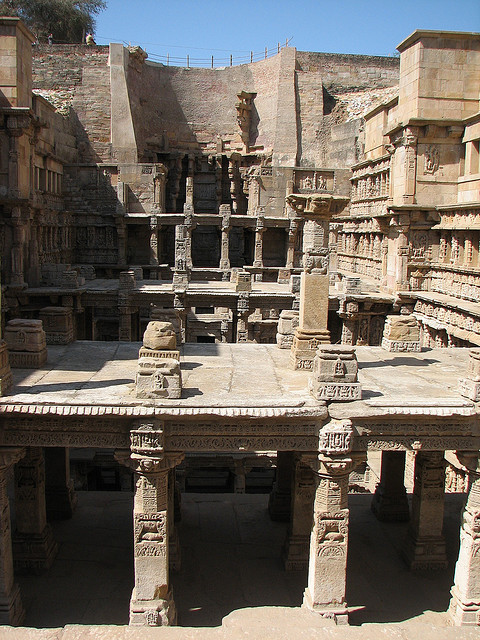During the period of the Solanki or Chalukya , the stepwell called the Rani ki vav, or Ran-ki vav (Queen’s step well) was constructed. It is a richly sculptured monument.
It is generally assumed that it was built in the memory of Bhimdev I (A.D. 1022 to 1063) son of Mularaja, the founder of the Solanki dynasty of Anahilwada Pattan in about 1050 A.D. by his widowed queen Udayamati.
It was probably completed by Udayamati and Karandev I after his death. A reference to Udayamati building the monument is in the 'Prabandha Chintamani' composed by Merunga Suri in 1304 AD.
It was one of the largest and the most sumptuous structures of its type. It became silted up and much of it is not visible now, except for some rows of sculptured panels in the circular part of the well. Among its ruins one pillar still stands which is the proof not only of the elegance of its design, but also excellent example of this period. A part only of the west well is extant from which it appears that the wall had been built of brick and faced with stone. From this wall project vertical bracket in pairs, this supported the different galleries of the well shaft proper. This bracketing is arranged in tires and is richly carved. There is also a small Gate below the last step of the step well which is having a 30 kilometer tunnel built (Now its has been blocked by stones and mud) which leads to the town of sidhpur near patan. It was used as an escape gateway for king who built the step well in the times of defeat.
Most of the sculpture is in devotion to Vishnu, in the forms of his Avataras (Krishna, Rama and others), representing their return to the world.

